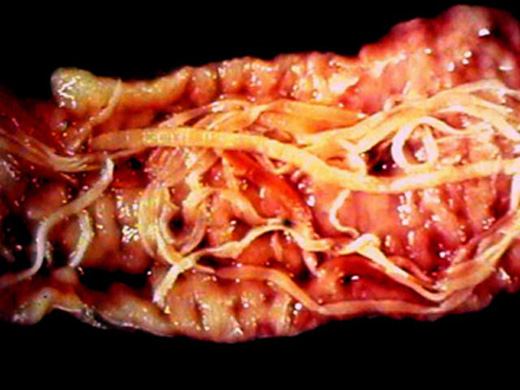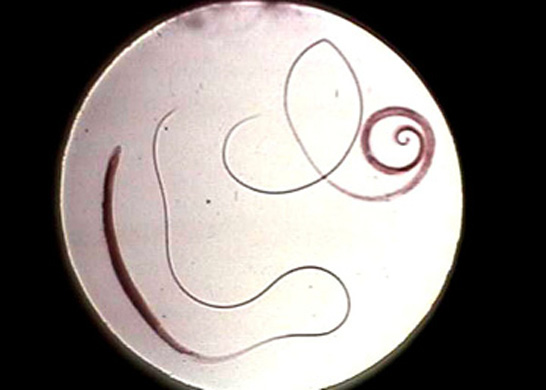WALL STREET JOURNAL - April 26, 2006; Page A1
Thousands of Foxes Are Living in London And Making a Mess
City Dwellers Fend Them Off, But Not Very Effectively;
By Cassell Brylan-Low,
LONDON -- Londoners are being outfoxed by foxes.
Long associated with Britain's leafy countryside, foxes now have become a common sight here. The creatures, which can trash gardens and leave a foul scent, can make unwelcome neighbors and have prompted some city folk to arm themselves with water jets and traps.
Gillian Alman has raised her fences, sprinkled pepper-laced repellents and even thrown water to scare off the fox that tears up her lawn, destroys her plants and steals shoes left outside. "He's a little demon," says Mrs. Alman, 61 years old, who lives on a street of Victorian houses in Balham, a residential district in south London. "He's so daring, he comes right up to the window and looks at us."
Robert Harris spent more than $2,000 on a new fence for his garden to keep out foxes. But they burrowed under it and continue to tear up his garden as well as gnaw through the television cable and cause Mr. Harris's West Highland terrier to bark at night. "The dog sits by the window and goes berserk," says the 80-year-old Mr. Harris, the former chairman of a theater-makeup supplier called Charles Fox. "It really is a nuisance."
For his next attack, Mr. Harris is eyeing a water-jet device that attaches to a garden hose pipe and fires water when an animal approaches.
Experts say foxes and humans increasingly are brushing up against one another as heaps of urban garbage act as a tasty lure and the city limits spread. It's too early to tell what, if any, effect a recent law limiting fox hunting is having on London's foxes. The fox has become a common feature of the city's landscape like the gray squirrel and the pigeon, both also considered by many to be urban pests.
There are an estimated 10,000 foxes living in the London area, some of them very near the financial district, Buckingham Palace, and No. 10 Downing Street, the prime minister's residence.
Opportunistic omnivores, foxes feed on pet rabbits and guinea pigs, as well as on worms, beetles, birds, rats and fruit. And they can get into spats with cats. Gardens are a particular problem.
A few years ago, Peter Craggs spent two weeks manning night vigils to catch the vandals that were repeatedly ripping out the underwater lights from his new garden pond and cutting the cables. He called the police twice before he caught the bushy-tailed culprits.
Mr. Craggs, a semiretired university administrator, bought a house in the countryside six months ago and says he has yet to see a fox there. He jokes the government should reach a compromise on fox hunting, which is now prohibited: ban it in the country but allow it in the towns. "You could have your Hackney hunt," he says, referring to one of London's inner-city boroughs.
The 2004 Hunting Act bans the hunting of foxes, or any wild animal, with packs of dogs. Traditionally, hunters on horseback or foot have followed packs of dogs that chase and kill foxes. It still is permitted to use up to two dogs to flush out wild animals, which can then be shot. Parliament took up the issue because it deemed the pack-dog chase cruel to animals. Hunters marched in protest arguing that the sport helps keep the fox population in check.
Shooting foxes by licensed gun owners remains legal under British law, as do most forms of trapping, says a spokeswoman for the government's Department for Environment, Food and Rural Affairs. Hiring a pest-control company to trap or shoot a fox can cost as much as $900. Poisoning is forbidden, however. The British government at one time tried to stem the rise of the urban fox population and as early as the 1940s started killing foxes in cities. But it phased out the policy by the 1980s because it was costly and largely ineffective.
Moreover, killing foxes is an emotional issue in the U.K., which has a strong animal-rights tradition, as Charlton Athletic Football Club has discovered. After a newspaper reported that the professional soccer team had hired County Pest Control Services Ltd. to dispatch the foxes that dig large holes in the field at its London stadium, it received a mailbag full of complaints, says operations director, Mick Everett.
Before that, Mr. Everett had hired someone to trap and relocate the foxes outside the city, but animal-welfare advocates argued that that, too, was inhumane because urban foxes can't fend for themselves in the country.
Now, Mr. Everett is getting advice from a wildlife consultant, who has recommended the soccer club block gaps under the fences and have a dog walk the perimeter to leave its scent.
Responsibility for dealing with foxes now falls to the local councils that govern London's 33 districts, mostly known as boroughs. But they typically just offer advice about securing garbage and reinforcing fences.
Many obvious alternatives, including the Royal Society for the Prevention of Cruelty to Animals and large pest-control companies like Rentokil Initial PLC won't routinely deal with foxes. The RSPCA says it intervenes only if a fox is injured or ill, and Rentokil says that it's company policy not to deal with foxes because they are such a touchy issue. "It's easier not to deal with that particular banana skin," a Rentokil spokesman says.
The buck-passing has been a source of frustration for London residents, including Lesley Aaronson, a 46-year-old mother of four who recently discovered a pair of trapped fox cubs under the stairs to her cellar that had entered the house through a broken air vent leading to the garden. She tried the RSPCA twice, as well as her local council and two pest-control firms, but no one could help her.
"It's a complete spiral of ever-descending madness," says Mrs. Aaronson, who meanwhile had to cope with whimpering cubs that sounded like crying puppies. "It was very distressing."
She finally found John Bryant, a wildlife consultant who charges $90 to $125 a visit and generally advises clients to tie up garbage, use repellents, remove compost heaps and fence off ponds. Still, it's very difficult to get rid of foxes for good, says the 63-year-old, who shuttles between jobs in a dark green station wagon plastered with wildlife-society stickers. He also concedes that displacing foxes from one garden means they'll probably end up in another.
In Mrs. Aaronson's case, Mr. Bryant enlisted the help of a builder to punch a hole in the wall. Then Mr. Bryant, sporting protective overalls and gloves, fished out the six-week-old cubs. He left the cubs in the garden shed with the door ajar and figured their mother would likely return for them and move them elsewhere. She did.



